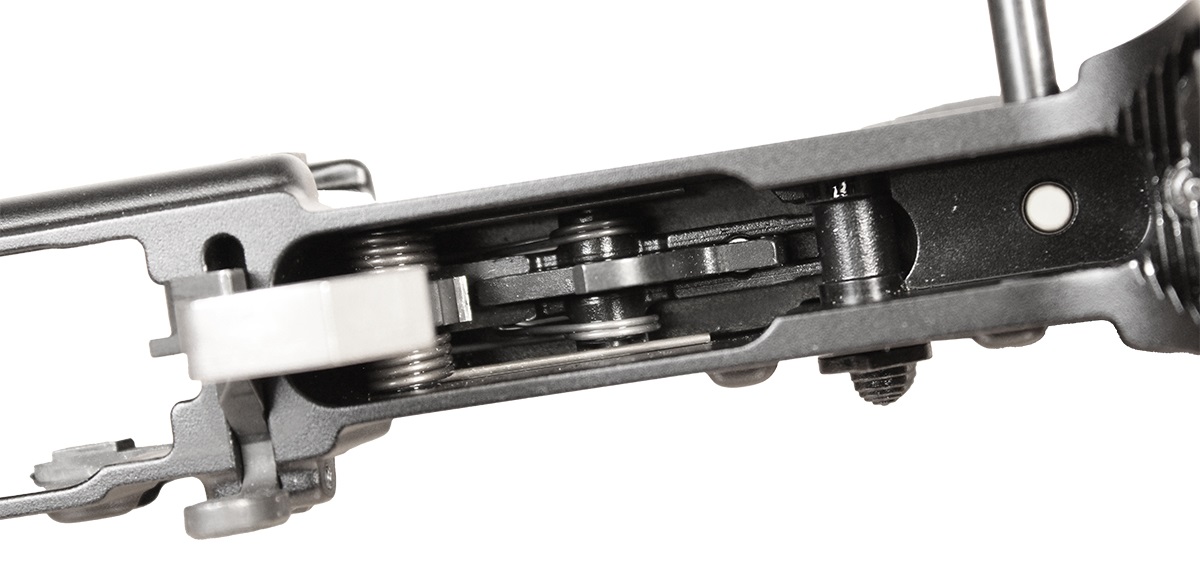How Often Should You Clean & Lube Your AR-15?
Posted by Gunbuilders.com on Dec 19th 2024
Some say the AR-15's even more reliable than Kaleshnikov's rifle -- that'll ruffle some feathers, sorry AK guys -- while others say it's a "finicky" gun that needs just the right amount of maintenance. So, which is true? How often should you clean your AR-15?
How Often Should You Clean The AR?
The answer doesn't involve describing just a single cleaning interval, but rather various intervals in which specific components need a good scrub-down and lubrication.
The Barrel: After Each Range Day

No matter your barrel's finish, you should clean the bore after every range day. Even with a solid nitride treatment or chrome lining, the surface of the bore will inevitably trap bits of carbon and copper fouling. If left to sit, these contaminants can lead to quicker degradation of the bore's rifling. Use a copper rod and brass brush to prevent damage to the rifling.
Star Chamber: Every 250 rounds

The "star chamber", or the portion of the barrel extension wherein the bolt's lugs rotate and lock, will accumulate carbon fouling fairly quickly. Although the pressure and force of the gas system allows the bolt to easily overpower any built up fouling in the chamber, it's still a good practice to wipe out the chamber with solvent and a rag every 250 rounds, or so, to extend the life of the barrel extension.
Bolt Carrier Group: Every 500 Rounds

At around 400 to 500 rounds, excess fouling of the bolt carrier group can make for unreliable cycling. At this round count, the gas rings at the base of the bolt -- which are responsible for trapping gas and generating the pressure needed for the bolt to rotate, unlock, and drive rearward -- can suffer increased wear.

The cam pin that secures the bolt and guides its rotation inside the carrier can also start to feel gritty; its contamination can cause the rotation of the bolt to become sticky, and unreliable.

The gas carrier key can also suffer from built up carbon fouling, reducing the amount of gas that travels to the bolt to cycle the action. The same holds true for the carrier's inner bore.

Lastly, the inside of the bolt and the extractor can benefit from cleaning every 500 rounds. Remove the extractor by tapping its pin out of the bolt using a punch. With the extractor removed, the inside of the bolt can be accessed, as can the inside of the extractor -- both are places where fouling tends to build up, which may impact function of the extractor and firing pin.
Fire Control Group: Every 1,000 Rounds

The hammer, trigger and disconnector may accumulate carbon fouling expelled by the bolt carrier group, albeit at a far slower rate than the BCG itself. At 1,000 rounds, the hammer and trigger pins, and the small pocket atop the rear of the trigger, where the disconnector spring resides, are the key areas to clean with solvent and a brush.
When & Where Should You Lube The AR?
Lubrication is as important as cleaning. The AR-15's direct-impingement function feeds more heat and fouling into the rifle's moving components, especially compared to any piston-driven gun. Lubrication helps to protect against this fouling, while ensuring your bolt, buffer, and fire controls cycle reliably, despite getting dirty.
Lubricate Before & After Each Range Session
Pretty simple: Lightly lube the AR before you shoot. A fresh coat of oil will better protect wear surfaces and ensure you suffer no malfunctions on the firing line.
Light lubrication after each range day -- even without cleaning -- will slow down oxidation of wear surfaces, and make cleaning and removal of fouling easier when the time comes.
Parts to Lubricate
First off: Don't soak the gun in oil from muzzle to buttstock. It's unnecessary, and only makes cleaning messier. Lightly oil these critical areas, but leave everything else dry.
Bolt Carrier Group

Apply lubrication to the inner bore of the carrier, and in the cam pin's hole. These are the key areas of friction during operation.
(Do not lube the bolt's lugs)
The face of the bolt, and the bolt's lugs, should not be lubricated. To ensure proper cycling and to prevent excess chamber pressure from building during firing, the barrel extension should be free of any oil and grease.
Hammer & Trigger Pins
Lightly oil the hammer and trigger pins. This light coating will help prevent carbon fouling and grit from getting inside the fire control components' various pin holes, which commonly makes for a sticker trigger and hammer reset.
Charging Handle

The charging handle sees the most wear from friction, particularly near the underside of the handle, where it rides along the top of the buffer tube. Lightly coat the length of the unit on the top side to reduce friction between it and the inside of the upper receiver, and apply a dab of oil or grease to the underside, near the levers.
(Don't Forget The Right Cleaning Stuff)
Using the correct solvents, brushes, and oils to maintain your AR-15 is as important as the task of cleaning itself. Grab a gun cleaning kit here. Our kits contain all the solvents and cleaning tools you need to keep your AR running smoothly.
DISCLAIMER: If you are new to the world of DIY gun building, you likely have a lot of questions and rightfully so. It’s an area that has a lot of questions that, without the correct answers, could have some serious implications. At GunBuilders.com, we are by no means providing this content on our website to serve as legal advice or legal counsel. We encourage each and every builder to perform their own research around their respective State laws as well as educating themselves on the Federal laws. When performing your own research, please be sure that you are getting your information from a reliable source.

